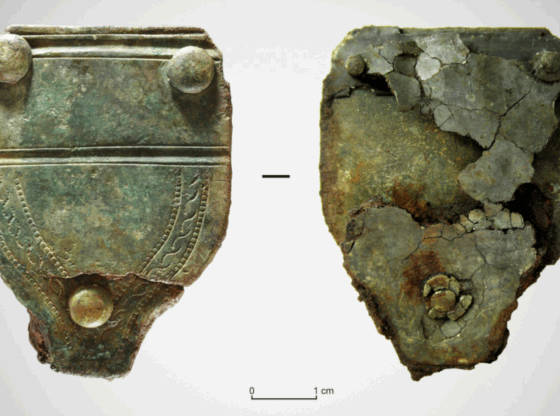The fierce attacks of the legions were not giving the results that the princeps Augustomoved to the north of Spain to end the resistance of the fierce mountain people. The Cantabrians held on thanks to the powerful defenses of their settlements and a war strategy that took advantage of the terrain. But in the year 25 BC there was a crucial moment in the development of the cantabrian wars: General Cayo Antisio landed with more troops in the area of Santander Bay, in the enemy rearguard, opening a new front by surprise and forcing the indigenous people to abandon their great towns and confront the Roman army in the open field, where they were defeated.
The episode, narrated by the ancient writers Florus and Orosius, has generated much debate among researchers over the exact location of the landing site, the Port Victoriaand the route south followed by the legionnaires. These questions are addressed in an article published in the journal Pyrenaepublished by the University of Barcelona, which presents the results of an archaeological intervention carried out in a Roman camp located at the top of La Cabaña (Castañeda-Santiurde de Toranzo-Puente Viesgo, Cantabria), about 15 kilometers from the coast.
It is a fortified field establishment of the type the castlea vaguely triangular enclosure, elongated in shape adapted to the top of the hill and with semicircular ends. It also had a simple line of embankment (aggravation) and pit (fossa) around the entire perimeter was reinforced with multiple defenses to the north – triple system of ditches -, an unusual feature in the fortifications of the time and which makes it “exceptional”according to archaeologists Enrique Gutiérrez Cuenca, José Ángel Hierro Gárate and Rafael Bolado del Castillo.
La Cabaña dagger sheath suspension piece.
MUPAC
The site, occupied by a eucalyptus plantation, had been identified through aerial orthophotographs and satellite images. But your partial destruction A few years ago, during some forestry work – heavy machinery completely altered the embankments of the multiple defenses – caused an archaeological intervention in an area that covers more than one hectare and which consisted of carrying out a visual and electromagnetic prospectingintensive in nature, with collection and georeferencing of materials.
Among the findings stand out a dagger sheath suspension piece (punch) of a legionary, an annular fibula without spring of the omega type, an ace of Lepidus dated between 44 and 36 BC and minted in the mint of the Lepida-Celsa colony (Velilla de Ebro, Zaragoza), a dolabra – an iron tool used in castrametation work that allowed digging ditches or felling trees – or a fragment of circular hand mill. “It is a completely exceptional find in its immediate context, since never before have grinding tools been identified in the field camps of the Cantabrian and Asturian wars,” say the authors.
They have also identified a ring that could belong to a tent peg, a nail, a possible shank of hair and other iron or copper alloy objects that may be associated with pieces of roman military equipment. “Based on the material remains identified, we are able to propose the itinerary followed by a Roman legion landed at the bottom of the bay of Santander until its connection with another arrival from the south along the line of peaks that separates the Pas and Besaya basins,” they say.
Two different conflicts
A little more than a kilometer to the south of La Cabaña is the Pando campmuch larger and with the capacity to shelter an entire legion. Both sites fit the legionary camp-minor garrison duo model (camp–the castle), recurring in the Cantabrian and Asturian wars and generally located in mountainous areas. “It seems more appropriate to us to think of the advance from the coast of a complete legion and in your camping in two enclosuresa main one, that of Pando, and a the castlethat of La Cabaña, in charge of controlling communication with the territory left behind,” propose the archaeologists of the Agger Project.
The small temporary enclosure in hostile territory, the article notes, could have been occupied by a contingent of between 535 and 715 individualsa flagged (detachment) of more than one cohort that had to control the passage and protect the rear of the legion landed in the bay of Santander from possible indigenous attacks. This force, transported from the Aquitaine coast by a fleet of between 80 and 100 ships, had some auxiliary units and was equipped with supplies, provisions and pack animals.
Archaeologists even propose, taking into account the monetary finds and the mints in which the coins handled by the soldiers were minted, such as Calagurris (Calahorra) or the aforementioned Celsa, that said legion came from the Ebro valley. Instead of moving through the interior of the Peninsula, it would have moved through the Cantabrian Sea to the conflict zone, setting sail from the southeastern end of the Bay of Biscay.
“The available data allow us to propose the origin of the contingent arriving by sea, at least a legion that would locate its main camp in Pando and leave a rearguard contingent in La Cabaña, from the territory of the Basques, probably from the area of Oiasso (Irún), after moving by land from the Ebro valley,” they summarize in the conclusions.
Prospecting at the site has brought to light vestiges of two conflicts separated by two millennia: the one corresponding to the Cantabrian wars and another “unexpected” one related to the battle of Santander of the Civil war: a unit of Mussolini’s Corpo di Truppe Volontarie (CTV) used this hill to flank the Republican defenses in their advance on Santander in the summer of 1937.

